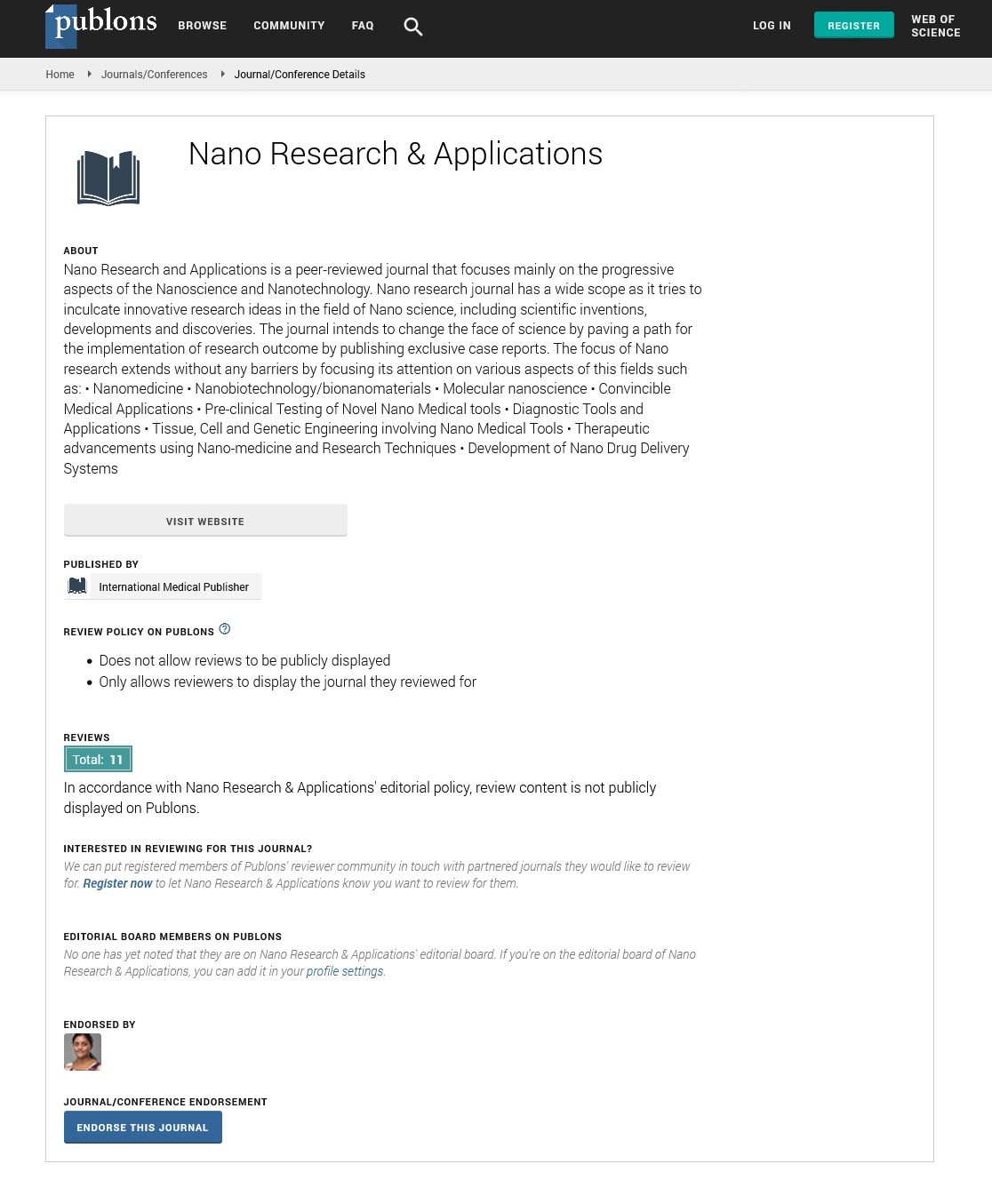ISSN : 2471-9838
Nano Research & Applications
Application of artificial neural networks for the prediction of performance of desiccant material for desiccant cooling system
Joint Event on 26th International Conference on Advanced Nanotechnology & 2nd Edition of International Conference on Materials Technology and Manufacturing Innovations
October 04-05, 2018 Moscow, Russia
Hemant Parmar
Ujjain Engineering College, India
ScientificTracks Abstracts: Nano Res Appl
DOI: 10.21767/2471-9838-C5-020
Abstract
Desiccant cooling system (DCS) is an alternate suitable option against conventional cooling system in humid climates. A typical system combines a dehumidifier that uses dry desiccant wheel with desiccant material, with direct or indirect evaporative systems and a sensible cooling system. DCS is the environmental protection technique for cooling purpose of the building. Desiccant wheel is main key component of the DCS and this wheel has desiccant material. The desiccant materials may be a suitable option for better use of evaporative cooling techniques in warm and humid climate. The dehumidification of air by adsorption is a physical process by desiccant materials that attracts the molecules of water present in air on the adsorbent surface. Desiccant materials attract moisture from the air by creating an area of low vapour pressure at the surface of desiccant. Some common adsorbents used are SiO2 (Silica gel), LiCl, Al2O3 (Activated alumina), LiBr and Zeolite. This system reduces the level of chlorofluorocarbons (CFC) in the environment because it restricts the use of conventional refrigerant. An Artificial Neural Network (ANN) was constructed to predict symptoms of desiccant wheel for any climatic conditions. The symptoms of desiccant wheel were outlet specific humidity and outlet dry bulb temperatures. Feed-forward network was employed with resilient back-propagation (trainrp) algorithm used as the training function. The outputs from the network were obtained and validated with the experimental results. Among the constructed networks, the best prediction performance was observed in two-hidden-layered network with minimum error. The modeling of the desiccant wheel was carried out with neural network toolbox of MATLAB® with two inputs (specific humidity and temperature at inlet) and two outputs (specific humidity and temperature at outlet) values. The performance index (Mean square error) for specific humidity and temperature were calculated as 0.00209 and 0.00579 respectively. The proposed model may be used for any climatic conditions to predict the output from the desiccant wheel for the design of the solid desiccant based cooling system in humid climate. Recent Publications 1. Parmar H., Hindoliya D.A., 2013, “Performance of solid desiccant based evaporating cooling system under the climatic zones of India”. International Journal of Low Carbon Technologies, vol.8, pp 52-57. 2. Parmar H., Hindoliya D.A., 2011, “Artificial Neural Network based modeling of Desiccant Wheel”. Energy and Buildings, vol.43, pp 3505-3513. 3. Parmar H., Hindoliya D.A., 2011, “Solid Desiccant Cooling System Employed with Ventilation Cycle”. Journal of Institution of Engineers (Springer), DOI 10.1007/s40032-012-0038-9. 4. Parmar H., Hindoliya D.A., 2011, “Desiccant Cooling System for Thermal Comfort: A Review”. International Journal of Engineering Science and Technology, vol.3, pp 4218- 4227. 5. Parmar H., Hindoliya D.A., 2018, “Studies on Job Satisfaction Level Among Employees of Dairy Based Industry”. Journal of Industrial Engineering, Accepted, In Press.
Biography
Hemant Parmar has expertise in the field of Desiccant Material and Desiccant Cooling System for thermal comfort. He is also an expert in the field of Energy and Environment. He has published many research papers in different areas. His work on the Desiccant Cooling System creates new pathways for protection of the environment to reduce CFC level.
E-mail: hemant_parmar1@rediffmail.com
Google Scholar citation report
Citations : 387
Nano Research & Applications received 387 citations as per Google Scholar report
Nano Research & Applications peer review process verified at publons
Abstracted/Indexed in
- Google Scholar
- China National Knowledge Infrastructure (CNKI)
- Directory of Research Journal Indexing (DRJI)
- WorldCat
- Publons
- Secret Search Engine Labs
- Euro Pub
Open Access Journals
- Aquaculture & Veterinary Science
- Chemistry & Chemical Sciences
- Clinical Sciences
- Engineering
- General Science
- Genetics & Molecular Biology
- Health Care & Nursing
- Immunology & Microbiology
- Materials Science
- Mathematics & Physics
- Medical Sciences
- Neurology & Psychiatry
- Oncology & Cancer Science
- Pharmaceutical Sciences
